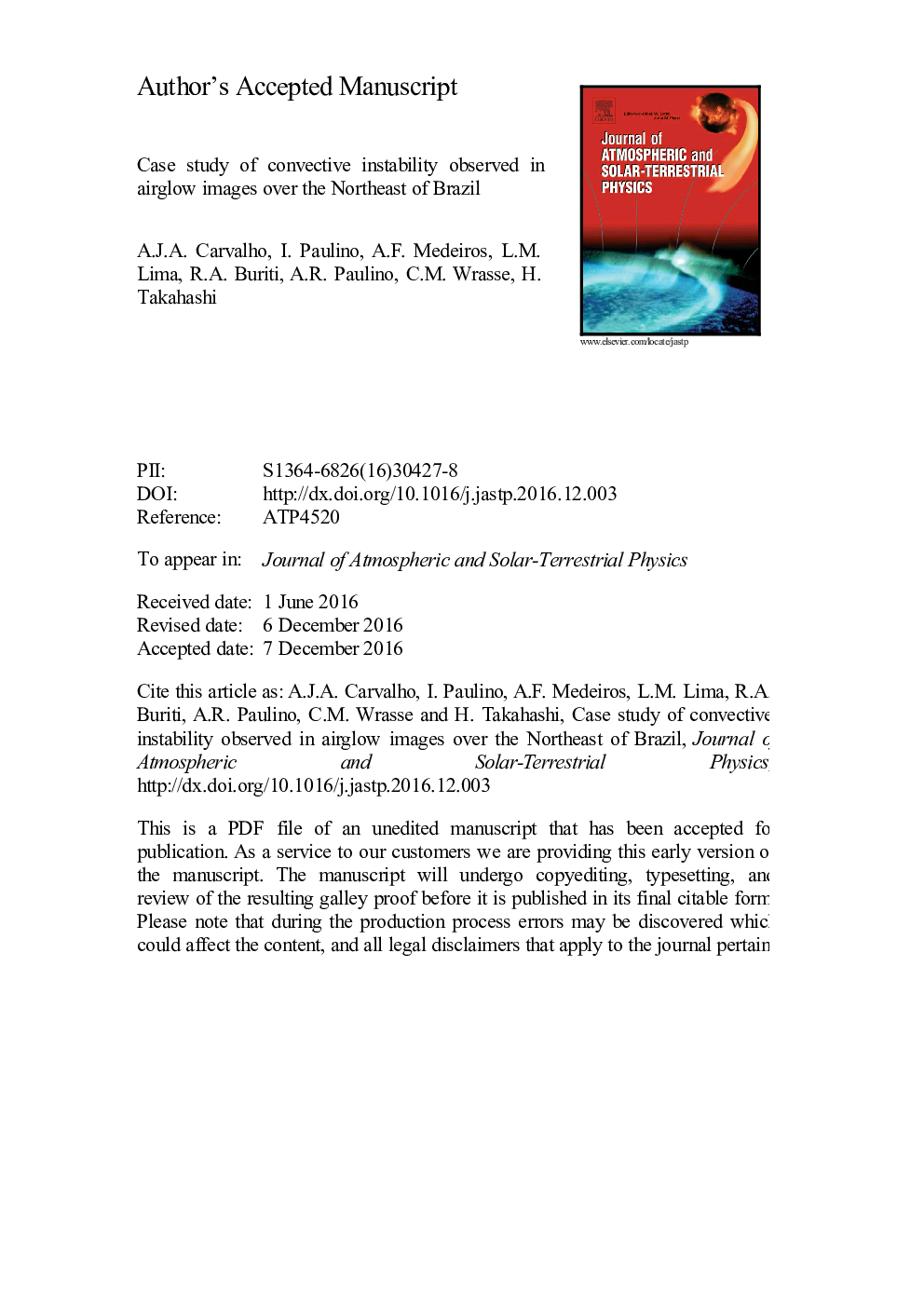| Article ID | Journal | Published Year | Pages | File Type |
|---|---|---|---|---|
| 5487625 | Journal of Atmospheric and Solar-Terrestrial Physics | 2017 | 41 Pages |
Abstract
An intense activity of ripples during the nighttime was observed in airglow images over São João do Cariri (36.5° W, 7.4° S) on 10 October 2004 which lasted for two hours. Those ripples appeared simultaneously with the crossing of a mesospheric front and medium scale gravity waves. The ripples occurred ahead of the mesospheric front and their phase front were almost parallel to the phase of the mesospheric front and were almost perpendicular to the phase front of the gravity wave. Using wind measurements from a meteor radar located at São João do Cariri and simultaneous vertical temperature profiles from the TIMED/SABER satellite, on the night of the events and within the imager field of view, the atmospheric background environment in the mesosphere and lower thermosphere (MLT) was investigated in order to understand the instability process that caused the appearance of the ripples. Dynamic and convective instabilities have been pointed out as responsible for creation of ripples in the MLT. The observed ripples were advected by the neutral wind, they occurred into a region with negative lapse rate of the potential temperature and the Richardson number was negative as well. According to these characteristics, the ripple structures could be generated in the MLT region due to the predominance of convective instability.
Keywords
Related Topics
Physical Sciences and Engineering
Earth and Planetary Sciences
Geophysics
Authors
A.J.A. Carvalho, I. Paulino, A.F. Medeiros, L.M. Lima, R.A. Buriti, A.R. Paulino, C.M. Wrasse, H. Takahashi,
